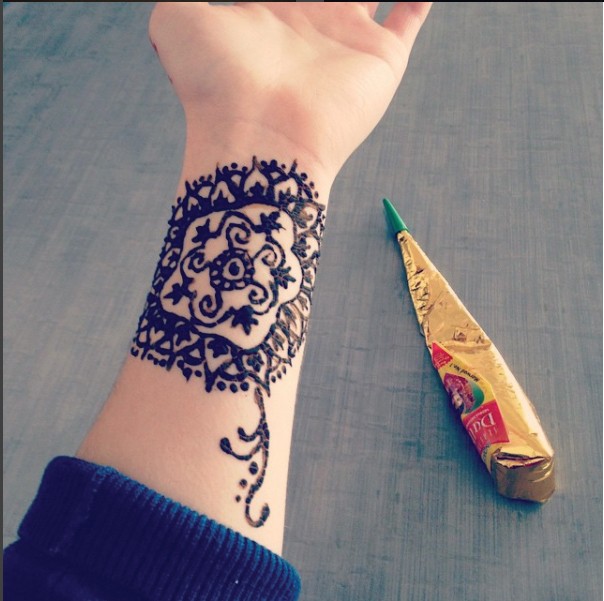Student-led event to shed light on disrespectful use of henna

GVL / Courtesy – Lyndsie Hosang Lyndsie Hosang practices henna during the summer time
Feb 19, 2018
The use of henna to apply intricate designs has roots as old as Ancient Egypt, but in the modern day, its popular use is typically seen on the hands and forearms of curious individuals. Unbeknownst to many, their designs may be disrespectful in some contexts, which will be the main topic of discussion during “Henna: Appreciation or Appropriation?” on Tuesday, Feb. 20, at 8 p.m. in North Living Center C’s second-floor lobby.
The event began as a collaboration between resident assistants (RAs) Melaura Rice and Nia Bashir-Benton, as well as the Office of Multicultural Affairs. Rice said the program was inspired by her friend who told her that while some people wear henna for fun, their lack of understanding leads to its appropriation.
“Henna is a large part of (my friend’s) culture,” Rice said. “She will always comment when she sees girls out in public with designs on their hands that are meant to be for specific religious purposes, and she will say, ‘OK, that’s appropriation.’”
The focus on cultural appropriation—which is the borrowing and misuse of another culture’s customs or traditions—will also be paired with a history of henna, a section on do’s and dont’s, and the proper application of henna, Rice said. While she hopes students will gain a better understanding of the art itself, the key focus is to use henna as a lens to address cultural appropriation on a larger scale.
“Cultural appropriation is kind of a buzzword you hear a lot these days, but some people don’t really know what it means and what the difference is between disrespecting someone’s culture and partaking in it respectfully and appreciating it,” Rice said. “We’re hoping to educate people on those differences, particularly with henna because it is so popular nowadays. It plays a really large part in many cultures, but people don’t realize that, and they accidentally disrespect the culture.”
For fellow RA Alexandra Sixt, another planner of the event, it can be difficult to distinguish where the line between appropriation and appreciation is due to the popularization of henna and other commonly appropriated customs.
“I think this is an important topic to go into because there’s a very fuzzy gray line,” Sixt said. “The most exciting part is learning what cultural appropriation is versus cultural appreciation, and because (of that) fuzzy gray line, no one knows the difference. … I’m excited to learn about what that line is.”
Rice said having the event take place now is especially important because this generation of students is trying to have a better sense of “intercultural competency” but doesn’t always know how to better it. She hopes to use the program as an outlet for those who are curious about improving their cultural insight.
“So many people are trying to get better at (being culturally competent), and they just don’t know how,” Rice said. “By putting this on, we’re really hoping we can push people in the right direction.”
For Sixt, the goal is to teach, whether it’s something new about the uses and history of henna or how to properly partake in a cultural custom. While the program uses henna as an example to view cultural appropriation, the organizers aim to teach lessons that can be applied to other appropriated customs, Sixt said.
“(Guests) can definitely take (these lessons) to other topics,” Sixt said. “I think this event will be a good introduction to students who don’t know what cultural appropriation is or what that line is, so they don’t cross it. They can take that whether they study abroad, whether they’re involved in another cultural event on campus or anything like that.”

























